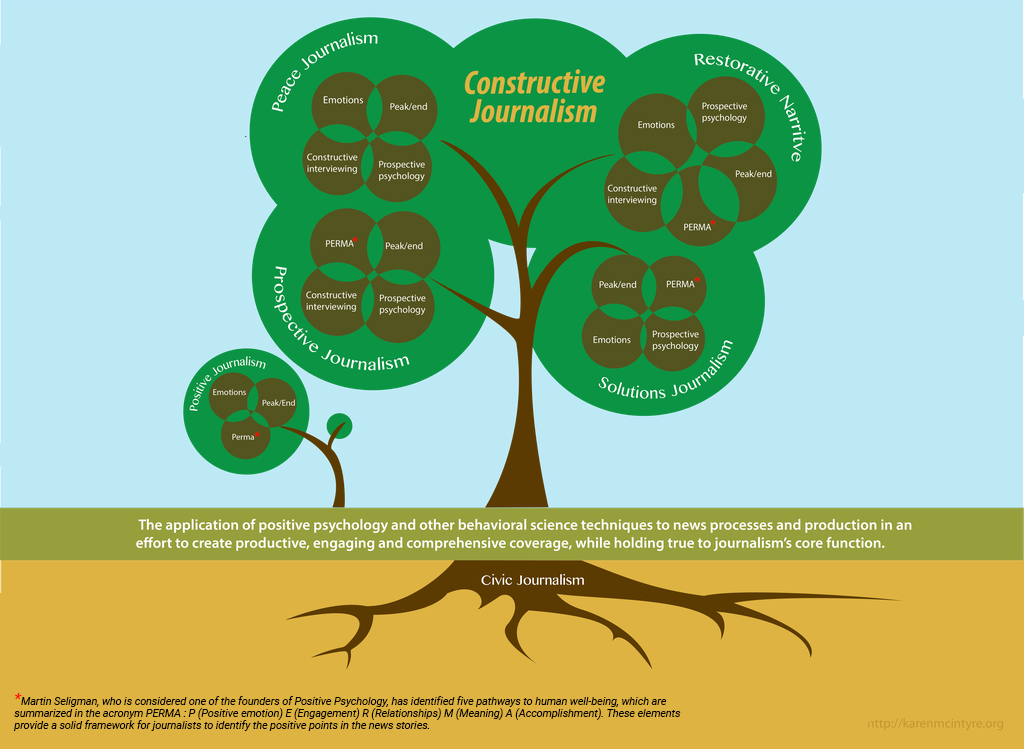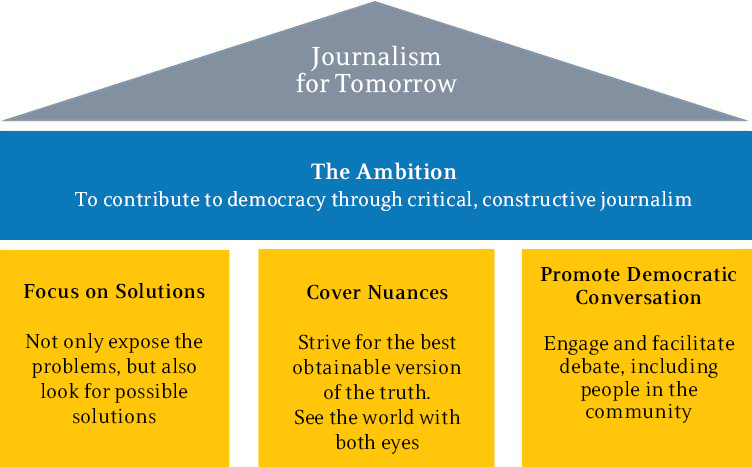WHAT IT INCLUDES
Constructive Journalism is a broad umbrella term. There are many similar terms, such as Solutions Journalism, Prospective Journalism (Future-focused journalism – derived from the relatively new concept of ‘Prospective Psychology’, which refers to the mental representation and evaluation of possible future situations), Peace Journalism Peace Journalism, and Restorative Narrative Journalism. Essentially, they are all branches of Constructive Journalism. In addition, we could include the so-called "Slow" Journalism - a sub-sector that was also born out of frustration with the quality of mainstream journalism. (More on the various terms/types of reporting beyond the problem-based narrative can be found in Karen McIntyre's and Nicole Damen's book "Reporting Beyond The Problem: From Civic Journalism to Solutions Journalism".)
Branches of Constructive Journalism
Source: Examples of Constructive Journalism by Dr. Karen McIntyre
In general, the objective of Constructive Journalism is to improve individual and social well-being. It is a response to the growing sensationalism, melodrama, and negative bias of today's media. It involves a solution-focused approach to information, in which journalists not only focus on the problems but also examine the solutions. Instead of just investigating what's going wrong in the world, they're also investigating what's going right - and why. It enriches both breaking news and investigative journalism. Not by telling "happy" stories or reducing public awareness of the problems, but by informing them more multilaterally about what is happening around a particular issue, including the people/places/policies that see results in addressing it.
Such a domain of journalism can bring forth all sorts of benefits: increased public engagement, the responsibility of policymakers, and a more holistic view of the world. But, everything starts with informing people…
Democracy needs strong, independent, critical journalism. Informing people more universally can empower them into becoming "dynamic contributors to a participatory democracy."
The Three Pillars of Constructive Journalism, source: Constructive Institute
Constructive journalism is important not only for the news industry but for democracy and us all. The following video takes you through “The Three Pillars” which presents the three approaches to constructive journalism practice and offers an add-on to both breaking and investigative journalism. These ‘Three Pillars’ are the foundation of Constructive Journalism practice. Each pillar represents a journalistic approach that all together feeds into the main mission; to contribute to democracy. But it is not only a model. It is also the vocabulary for discussing constructive journalism and how to do it.
Explore our "Library" to learn more about Constructive Journalism, from educational videos to further reading material.
What is and what is not considered as Constructive Journalism
The so-called "Positive Journalism" is not identical to Constructive Journalism (which is why it is depicted separately in the "branches" picture above). It is less serious or demanding and often tells stories of heroes and individual events that are not of essential importance to society – but, this does not mean that these stories do not play a useful role. Sometimes this distinction can be unclear.



